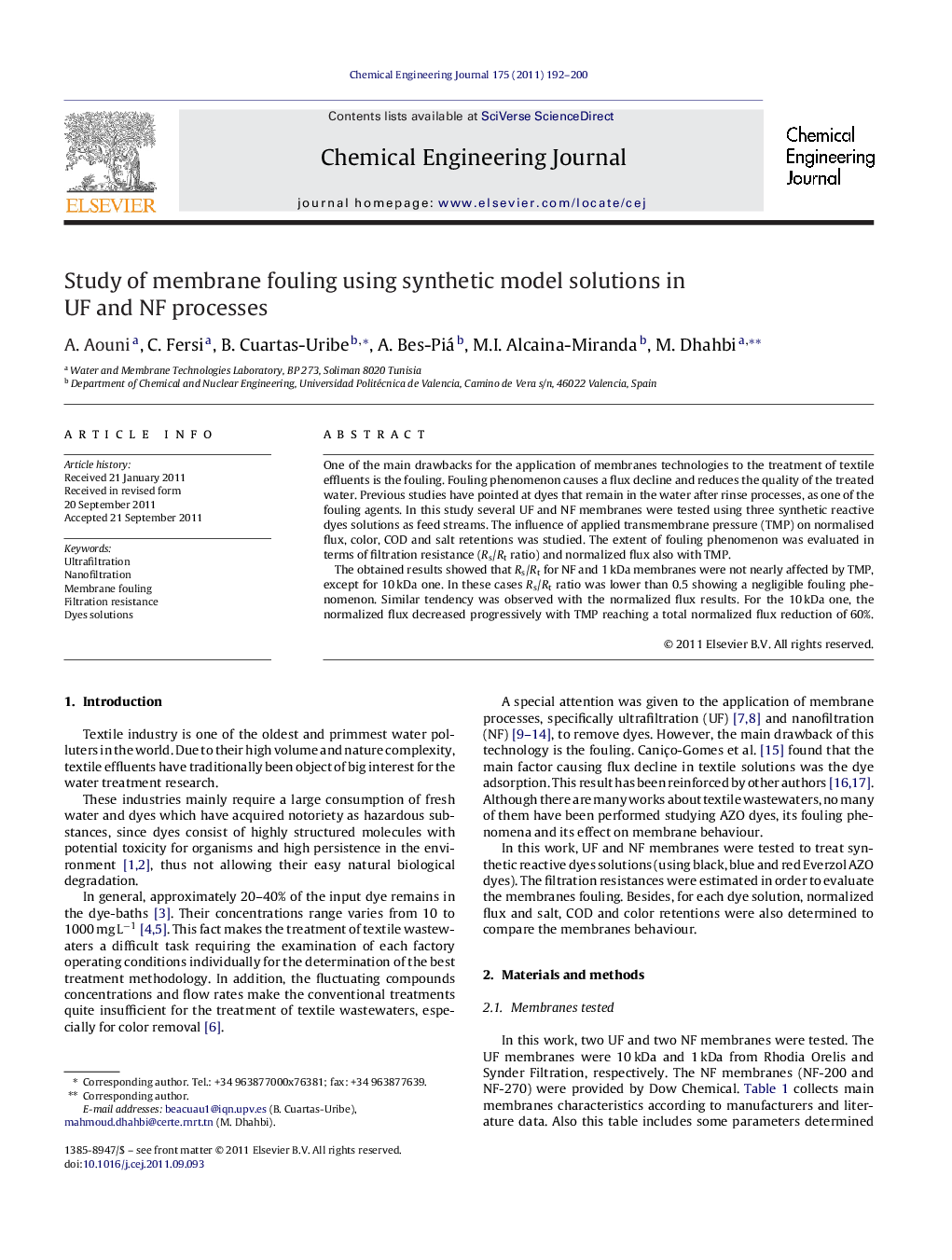| کد مقاله | کد نشریه | سال انتشار | مقاله انگلیسی | نسخه تمام متن |
|---|---|---|---|---|
| 150972 | 456460 | 2011 | 9 صفحه PDF | دانلود رایگان |

One of the main drawbacks for the application of membranes technologies to the treatment of textile effluents is the fouling. Fouling phenomenon causes a flux decline and reduces the quality of the treated water. Previous studies have pointed at dyes that remain in the water after rinse processes, as one of the fouling agents. In this study several UF and NF membranes were tested using three synthetic reactive dyes solutions as feed streams. The influence of applied transmembrane pressure (TMP) on normalised flux, color, COD and salt retentions was studied. The extent of fouling phenomenon was evaluated in terms of filtration resistance (Rs/Rt ratio) and normalized flux also with TMP.The obtained results showed that Rs/Rt for NF and 1 kDa membranes were not nearly affected by TMP, except for 10 kDa one. In these cases Rs/Rt ratio was lower than 0.5 showing a negligible fouling phenomenon. Similar tendency was observed with the normalized flux results. For the 10 kDa one, the normalized flux decreased progressively with TMP reaching a total normalized flux reduction of 60%.
► The application of membrane processes to textile effluents is limited by membrane fouling phenomena; especially if the pretreatment is not very exhausted.
► A deep study about the relation between the membrane processes (ultrafiltration and nanofiltration) and fouling has been carried out.
► Fouling was measured as filtration resistances.
► The membrane with 1 kDa of MWCO was less prone to fouling.
► For all tested membranes no influence of osmotic pressure generated by the dyes and salts on filtration resistances was found.
Journal: Chemical Engineering Journal - Volume 175, 15 November 2011, Pages 192–200